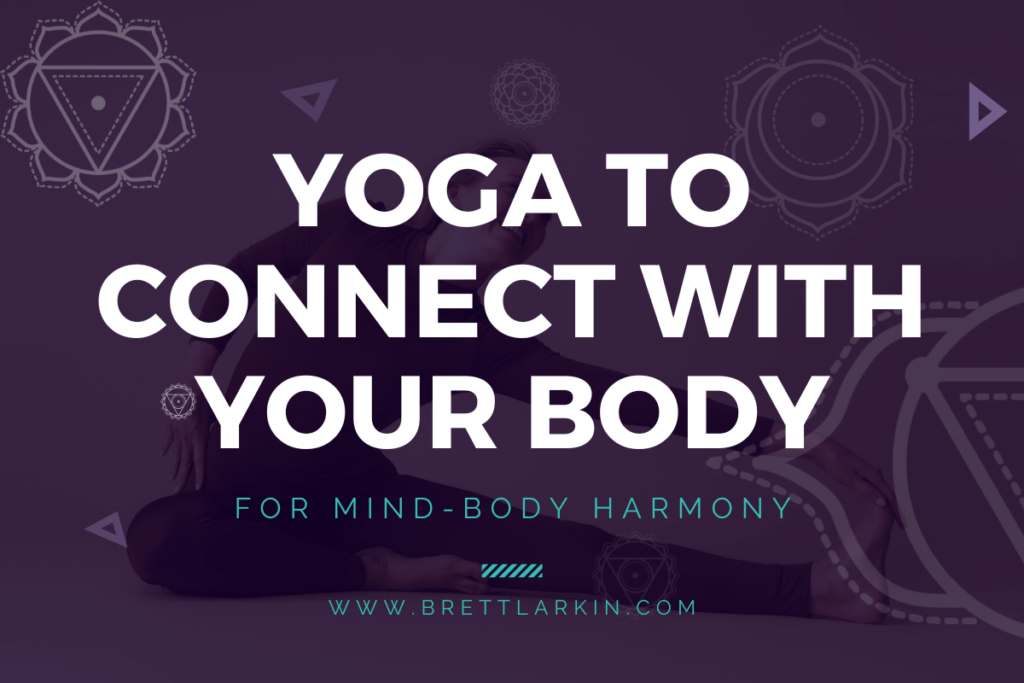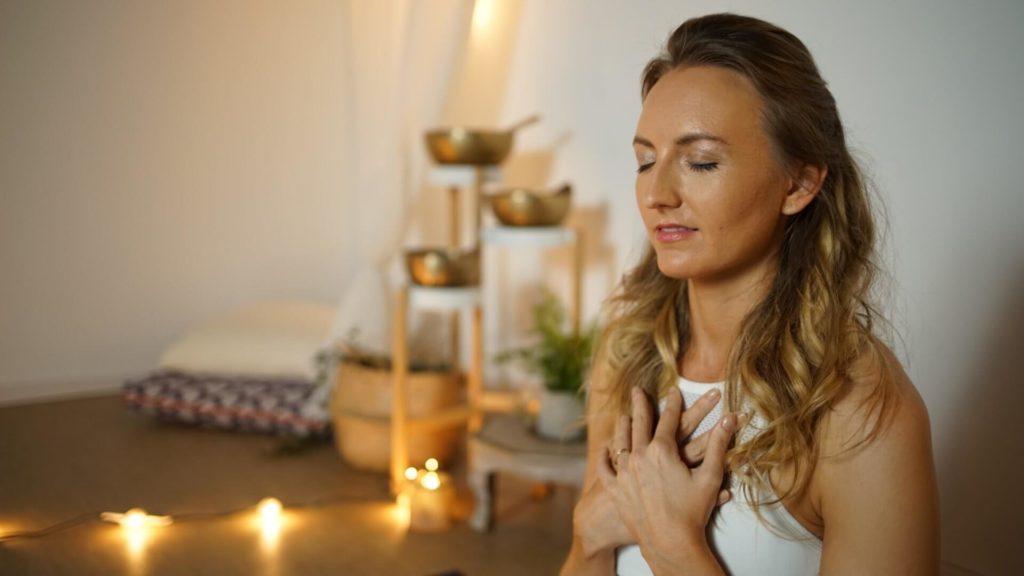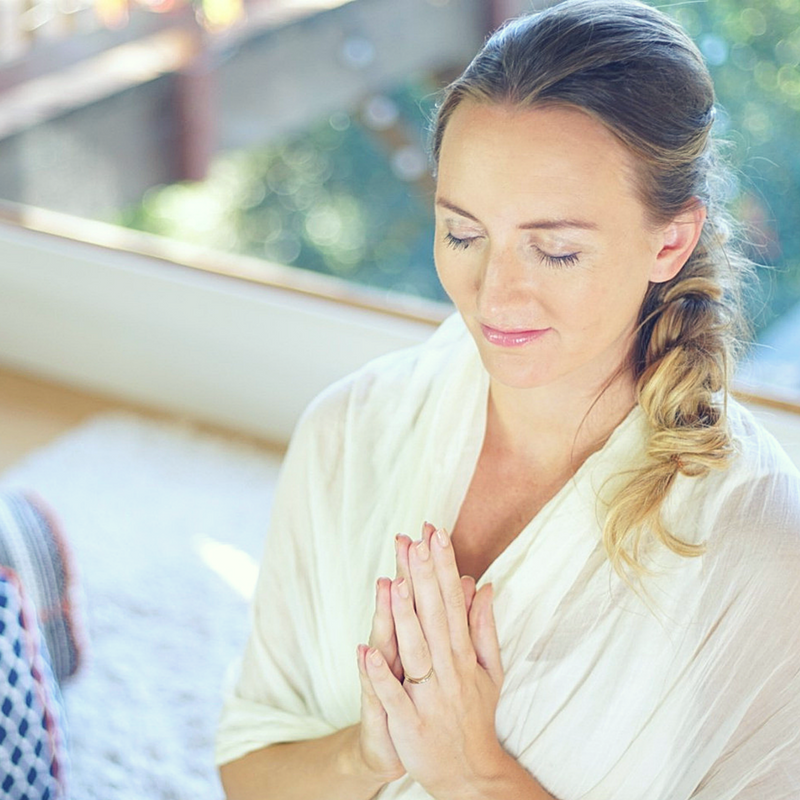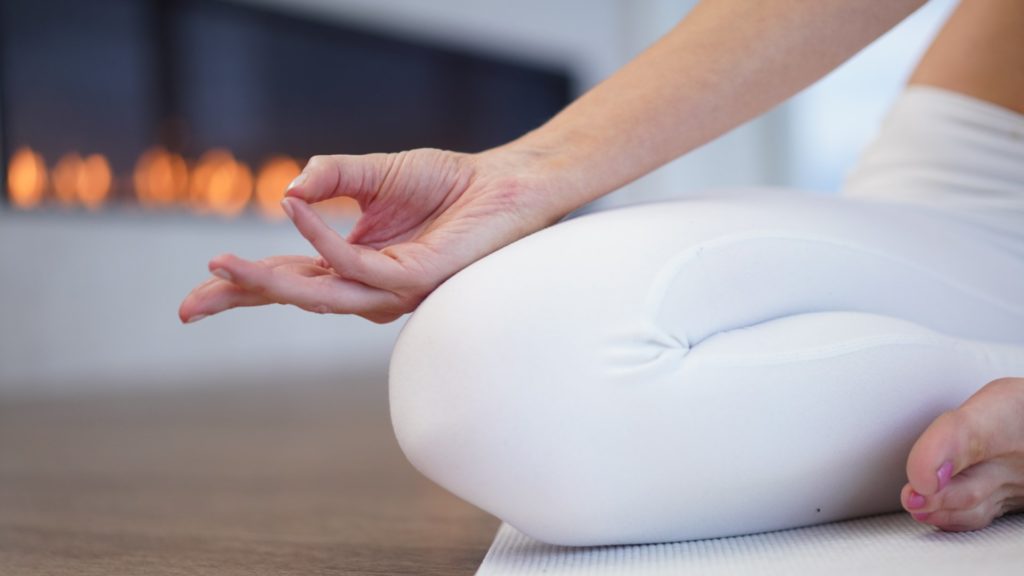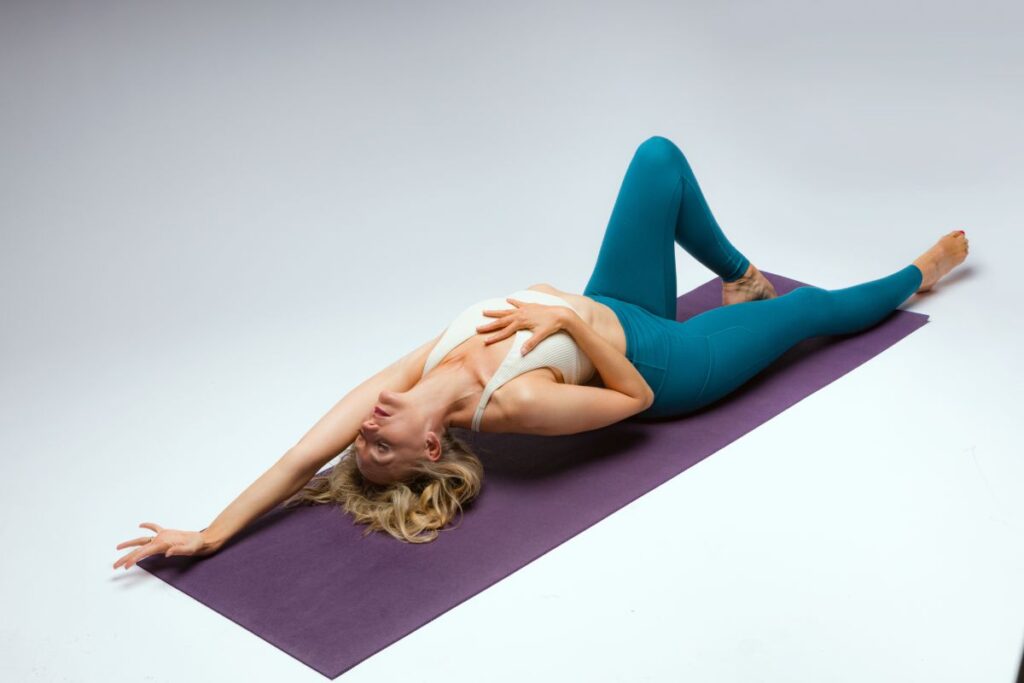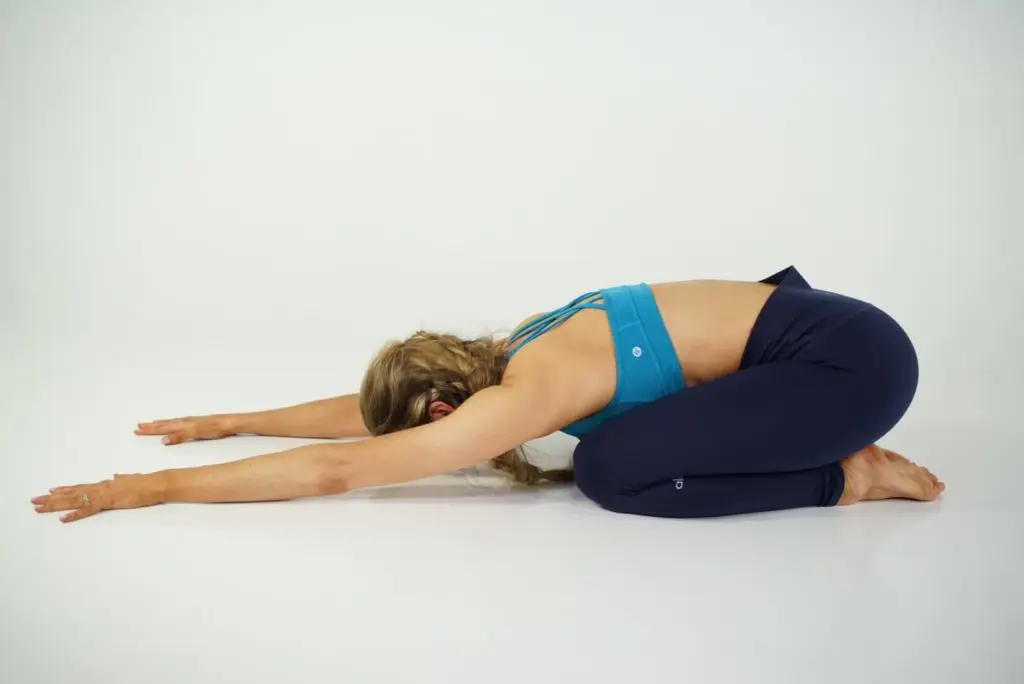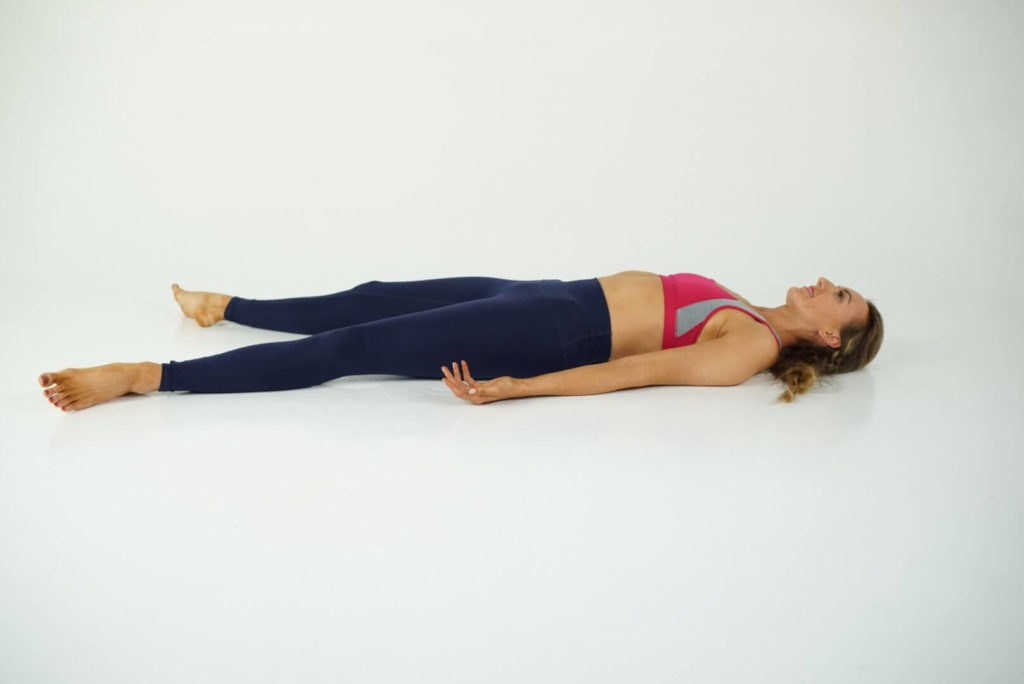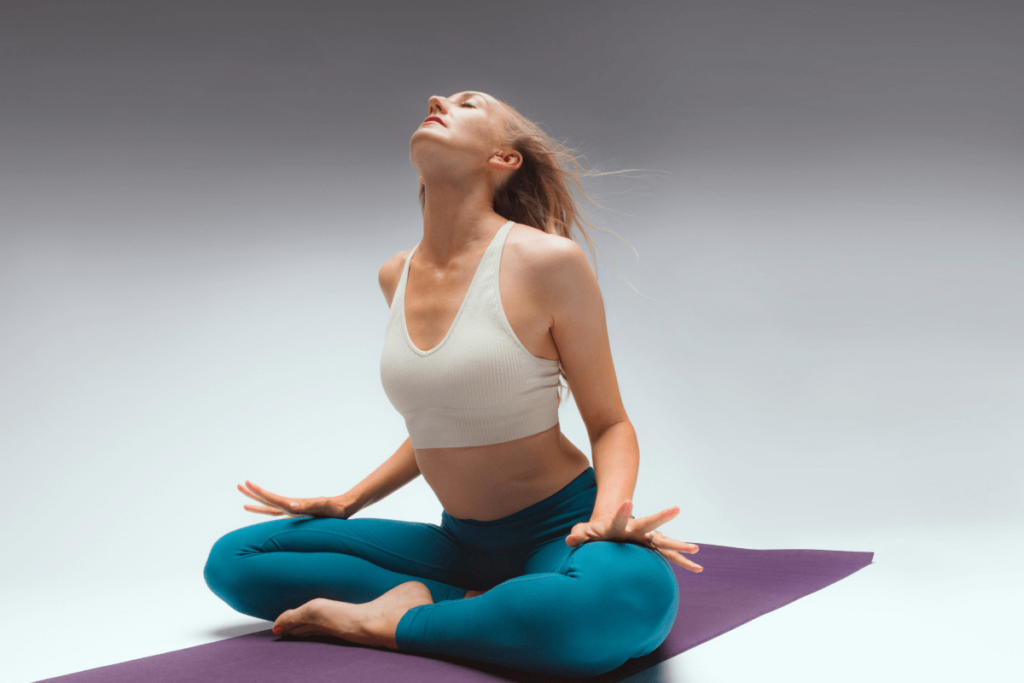If you’re like me, you spend most of your time running around letting your mind lead the way.
With a full schedule, a long to do list, work, kids, and a marriage to manage, it’s so easy to feel disembodied. Add a constant stream of notifications and screens, and you might feel like you’re just a talking head, living in a state of chronic stress and other negative emotions.
When we live this way, we’re setting ourselves up for failure, inviting in issues like a weakened immune function, anxiety, and other side effects.
The good new is your mind and body are constantly connected – and you can improve their relationship!
The mind body connection is critical for your physical health, especially your immune system, and your mental health. That’s why so many mind body therapies (and even cognitive behavioral therapy) are focused on reconnecting the two.
Because the body affects the mind and vice versa. Both your physical and mental health depend on your mind body connection. When your mind is running the show, your physical wellbeing might be in a state of fight or flight response, or you might be holding muscle tension, or experiencing high blood pressure.
So, how do you reattach your mind to your body and improve your mind body connection?
You can use yoga to connect your body and your mind. In fact, yoga is one of the best mind body therapies and a stellar way to foster a healthy mind body connection, which boosts your immune system, lowers blood pressure, and balances your nervous system. Things like meditation positively impact your mind body connection, and that’s just one part of your yoga practice.
Think of yoga as the ultimate mind body medicine for your mind body connection. Sometimes I like to think of it as self love for women.
How does this work? Let’s first talk about the mind body link…
What Is The Mind-Body Connection?
The mind body connection is all about how your thoughts and emotions influence your physical health—and in turn, your physical body and bodily sensations affect your mental states and mental health.
How does the mind body connection work? Essentially, what happens in your mind can have a direct impact on your body, and vice versa. Like when you’re stressed or anxious, you might notice physical symptoms like tension in your shoulders or an increased heart rate. These are signs that your nervous system is responding to your mind.
On the flip side, your physical state—like feeling fatigued or unwell—can affect your mood and mental clarity. It’s a two-way street that shows just how intertwined our mental and physical well-being truly are. That’s why it’s worthwhile to strengthen the mind body connection so you can improve your physical health along with your mental health.
Tapping into this mind body connection allows you to take charge of your health in a more holistic way. By becoming more aware of how your feelings affect your mental and physical health, you can respond to stress and challenges with greater resilience, cultivate a more positive outlook, and improve your mental focus and emotional well being. This is where yoga comes in! It’s like a super boost for your mind body connection.
Time on the mat in physical postures offers you a wonderful opportunity to check in with yourself, helping with stress reduction, to release tension, and find balance. Even a simple body scan meditation in savasana can have profound effects on your mental state. Mind body exercises can boost our immune systems, combat negative self talk, and reduce stress. Self love daily affirmations can add an extra boost to your mind body connection too.
Embracing this mind body connection isn’t just about feeling good; it’s about living a more empowered and fulfilling life with a deeper understanding of who you are in the present moment so you can practice the loving self care you need to be your best self. Yoga is a great way to fall in love with yourself.
Experience My Somatic Yoga Workshop (usually $67) FREE!👇
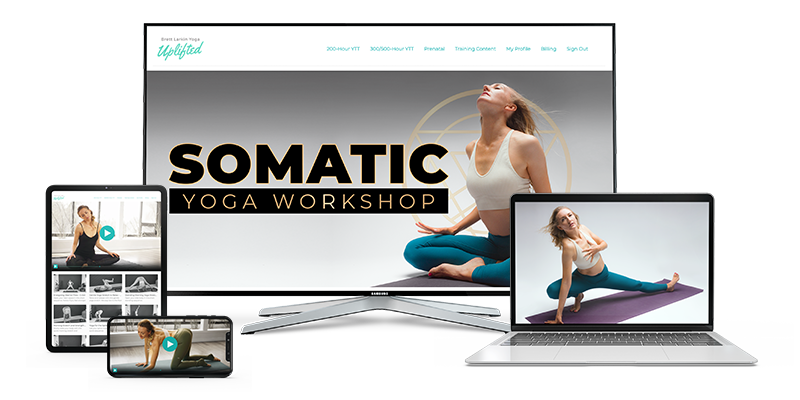
Connecting Mind And Body Through Yoga
To truly deepen your mind body connection, there are several yogic practices and philosophies that can guide you, along with specific poses.
By incorporating these concepts into your practice, you can cultivate a deeper awareness of yourself as a whole person, promote immune function and positive emotions, and enhance your overall health.
Slowing Down
One of the most impactful ways to reconnect with your mind body connection is by simply slowing down. In our fast-paced lives, it’s easy to rush through your yoga practice, but taking your time allows you to fully experience each pose. Even if you only have five minutes, doing one pose slowly will have more impact than jamming 10 poses in.
By moving deliberately and mindfully, you can tune into the sensations in your body, notice emotional states, negative thought patterns, and areas of tension, and cultivate a greater sense of calm and ease.
Slowing down encourages you to breathe deeply and connect with your inner self, fostering a state of well being that can carry with you throughout the rest of your day. Y
oga combines physical postures with stress reduction techniques, so your body’s response is to slip into a deeper state of relaxation, where you’re able to reduce stress hormones and deepen your mind body connection. The key to a strong mind body connection is slowing down.
Pratyahara
Pratyahara, often referred to as the “withdrawal of the senses,” is a powerful yogic practice that helps you turn your attention inward. In our screen-saturated world, we’re constantly bombarded with external stimuli, making it challenging to connect with our bodies and emotions.
By practicing Pratyahara, you can intentionally disconnect from distractions, allowing you to focus on your breath and body. I like to add an eye mask as part of my yoga therapy – it allows me to really go inward and practice deep self care through breathing techniques and keeping my emotional focus on the present moment.
This inward journey helps you gain clarity about your feelings and physical sensations, enhancing your overall mind body connection and letting you often shift into a more positive emotional state.
Mindful Breathing
The physical effects of specific breathing exercises can help you with emotional regulation, soothing stress hormones, and even managing mental health disorders. Progressive muscle relaxation is a great entryway into mindful breathing.
Mindful breathing is a fundamental practice in yoga that emphasizes awareness of your breath. This practice is known as Pranayama. By focusing on each inhale and exhale, you can ground yourself in the present moment and create a sense of calm.
There are specific techniques for pain management, especially dealing with chronic pain, and to tap into different brain areas ,emotional responses, and bodily functions.
This mind body connection practice not only reduces chronic stress but also helps you become more attuned to your emotional health and the signals your body is sending.
As you breathe mindfully, notice how your body responds—where you feel tension, where you feel ease. The more your breathe, the more you strengthen the mind body connection, and boost your physical health, mental states, and emotional states. This heightened somatic awareness can lead to profound insights about your well being, mental health issues, and the physical effects of stress, fostering a deeper connection between your mind and body. Your overall health will benefit from a mindful breathing practice, and mind body therapies, like cognitive behavioral therapy, typically include breathwork to help boost the mind body connection.
Asana Practice
Inactivity can negatively affect your immune function, cardiovascular health, and your overall well being.
Engaging in a thoughtful asana practice—where you hold and flow through yoga poses—can significantly enhance your mind body connection, your well being, your emotional health, your physical health, and your mind body connection.
Each pose offers a unique opportunity to explore how your body feels and moves, inviting you to pay attention to areas of strength and flexibility. As you align your breath with your movement, you create a rhythmic flow that encourages mindfulness and presence.
This practice not only strengthens your body but also allows you to release tension and connect more deeply with your emotions, making each yoga session a holistic experience for your mind and body.
Yoga To Connect With Your Body
Yoga poses are a powerful way to reconnect your mind and body, helping you cultivate a deeper awareness of your physical sensations and emotional state.
By focusing on your breath and movement, you can release tension, enhance mindfulness, and foster a greater sense of harmony within yourself.
While the following poses are particularly effective for this purpose, any yoga pose can facilitate this connection—so feel free to explore and discover what resonates best with you!
Legs Up the Wall
- Lie down on your back with your legs extended toward a wall.
- Bring your feet up onto the wall and scooch your bottom closer to the wall.
- Extend your legs straight up the wall, allowing them to relax.
- Let your legs fall open for a gentle stretch, or use a strap to keep them together if preferred.
- If desired, place a cushion under your seat for added comfort.
- When you’re ready to come out of the pose, do so slowly and take a few breaths in rest before transitioning back to a comfortable seated position.
Variations
You can modify Legs Up the Wall by placing a folded blanket or bolster under your hips for additional support and comfort. If your hamstrings are tight, bend your knees slightly while keeping your feet on the wall. For a deeper stretch, experiment with moving your feet wider apart or using a strap to hold your legs together. If you want to add a gentle inversion, try moving your legs into a butterfly position while supported by the wall. Alternatively, you can place a pillow under your head for extra elevation and comfort.
Benefits
This restorative pose promotes relaxation and reduces stress by encouraging gentle inversion, which can enhance circulation and alleviate tension in the legs and lower back. This pose can help calm the nervous system, improve lymphatic drainage, and reduce fatigue.
Pro Tips for Yoga Teachers:
- Encourage focus on breath and body relaxation.
- Remind students to use props for added comfort.
- Suggest closing eyes or softening the gaze for deeper relaxation.
Child’s Pose
- Begin by kneeling and sit back on your heels. If you need more comfort, place a cushion between your legs.
- Take a deep breath and begin to explore touch on different parts of your body. Gently touch your legs, rubbing your palms from your hips to your knees.
- Move with your breath as you experiment with various types of touch—light, deep, massaging, or playful.
- When you feel ready, lower your head down, rest for a few breaths, and then slowly sit back up.
Variations
For added comfort, try placing a blanket under your knees or a cushion between your legs. If kneeling feels uncomfortable, you can switch to a seated cross-legged position while exploring touch.
You can also incorporate gentle swaying or circular movements with your torso to deepen the mind body connection.
Benefits
Child’s pose promotes relaxation and self-awareness by encouraging you to explore touch and movement, helping you reconnect with your body. It releases tension, enhances circulation, and improves focus by synchronizing breath with gentle motion.
Additionally, incorporating mindful touch can boost your sensory awareness and reduce stress.
Pro Tips for Yoga Teachers
- Encourage exploration of touch at each student’s own pace and comfort level.
- Suggest using props for added comfort and accessibility.
- Guide students to sync their touch with their breath.
Corpse Pose – Savasana
- Lie down on your back with your feet spread as wide as the mat. Turn your palms up and close your eyes, focusing on your breath.
- Stay in this pose for as long as needed.
- To come out of the pose, gently start moving your fingers and toes, then slowly wake up the rest of your body.
Variations
Place an eye mask over your eyes to turn even deeper inside. Use blankets and bolsters under your neck, knees for added support.
Benefits
This pose is a powerful way to reconnect your mind and body, promoting deep relaxation and inner stillness. It encourages you to let go of physical tension while calming your thoughts, fostering a stronger mind body connection.
Many yoga teachers consider it one of the most restorative poses because it allows you to turn on your parasympathetic nervous system and rest.
Pro Tips for Yoga Teachers
- Encourage students to relax each body part slowly while focusing on their breath, using progressive muscle relaxation.
- Gently remind students to bring their attention back to the body when the mind wanders.
- Use soft lighting or calming scents to create a peaceful, supportive atmosphere.
Final Thoughts
By learning how to connect inward through yoga, you’re fostering a stronger bond with your intuition, emotions, and community.
It’s in this space of connection that true healing takes place, allowing you to live in alignment with your highest self.
If you want to go even deeper, I invite you to join my Somatic Yoga Training Certification. This comprehensive training will equip you with practical tools and insights to enhance your practice and effectively guide others on their somatic yoga journey.
Next Steps
- Take a deep dive into embodiment and somatic yoga with my Somatic Yoga certification program.
- If you’re interested in practical kriya yoga as a way to improve your daily life and relationships, check out my Yoga for Self Mastery course.
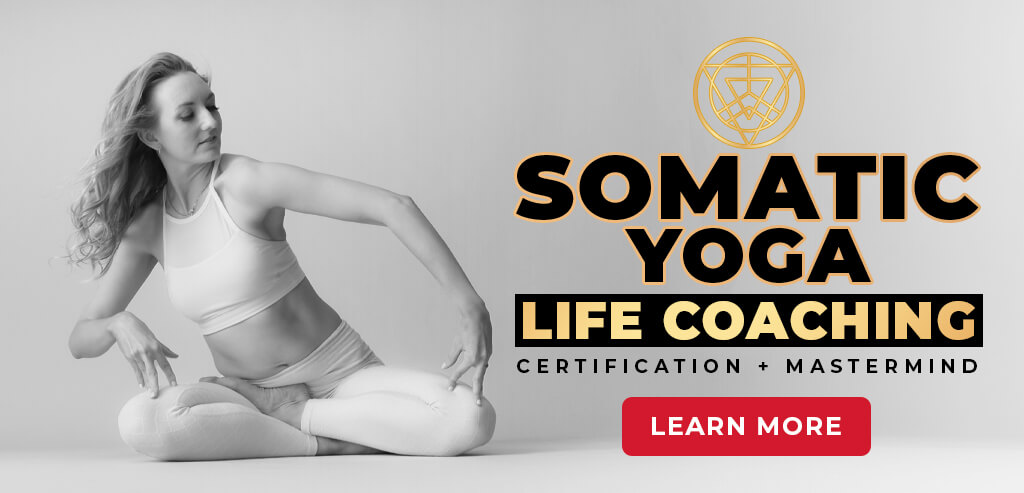
FREE Embodied Yoga Workshop (usually $67) Somatic Techniques & Cord Cutting Ritual

Find more yoga sequences by benefit.
YOU MIGHT ALSO LIKE
- How to Teach Somatic Yoga: A Practical Guide for Instructors
- The Best Somatic Exercises for Grief: Find Healing Through Movement
- The Best Somatic Exercises for Anger Management and Emotional Release
- Yoga to Reconnect with Yourself: 5 Essential Practices for Inner Peace
- Yoga for Connection: 10 Poses to Deepen Relationships and Bonding
- Yoga To Connect With Your Body For Mind-Body Harmony
- Yoga to Connect with Feminine Energy: 5 Transformative Practices
- Yoga to Connect with Your Heart: 3 Poses for Emotional Balance
- Myofascial Release Yoga: Unlock Tension and Improve Flexibility
- 6 Hip Openers For Emotional Release
- Office Yoga: 10 Poses You Can Do Right Now
- Ayurveda Food Combining: The Key to Balanced Digestion
- Yoga For Grief: 8 Yoga Poses For Support
- Yoga for Vata Dosha: Practice Poses and Tips
- Yoga for Pitta Dosha: Practice Poses and Tips

